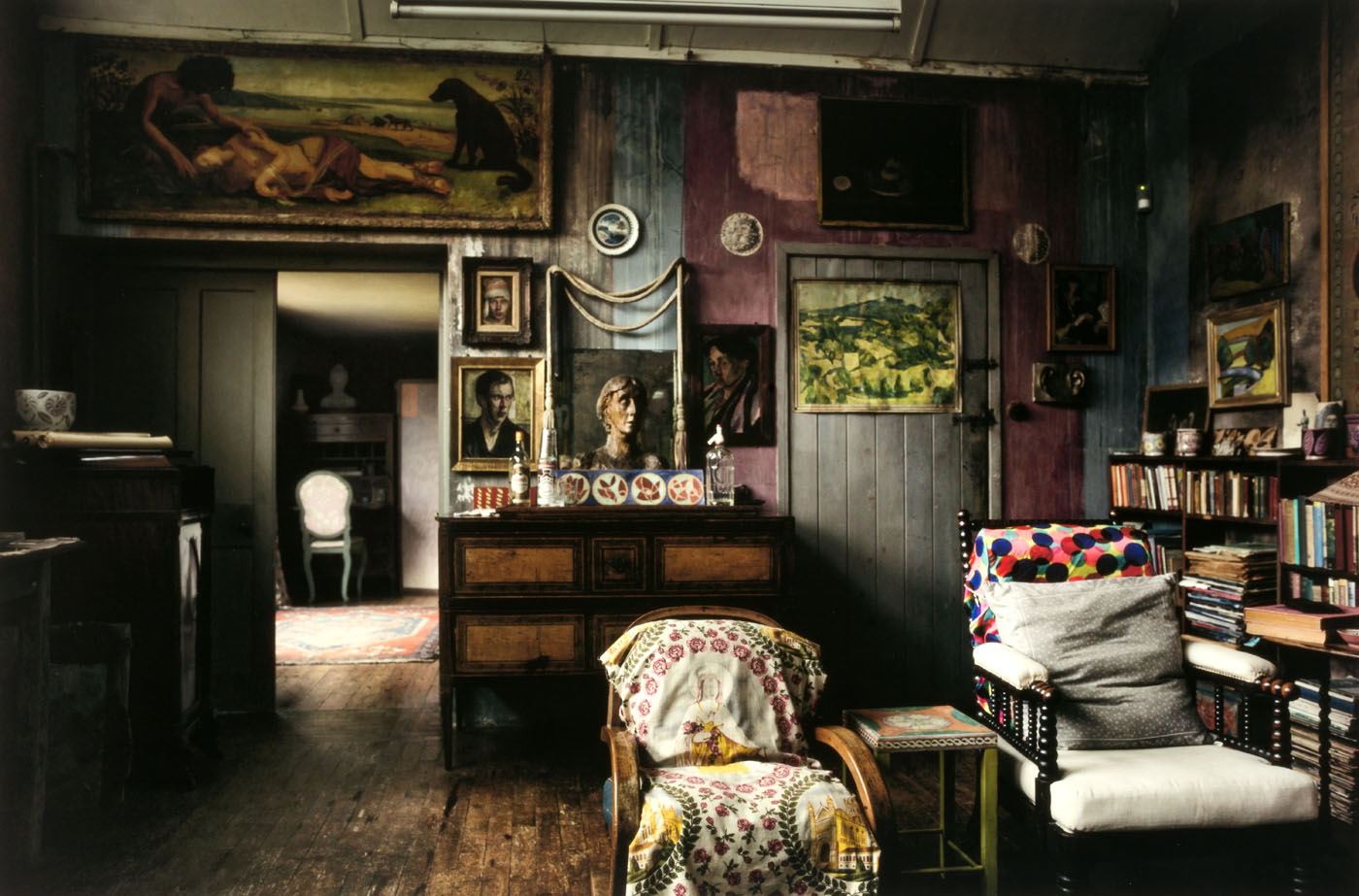Charleston Farmhouse
In 1916 Charleston farmhouse in Firle, East Sussex, became the country home to artist Vanessa Bell, her children (Quentin, Julian and Angelica), and lover/ friend, artist Duncan Grant.
Following Bell's death in 1961 and Grant’s in 1978, the Charleston Trust was set up to restore and preserve the Bloomsbury home as a museum and gallery for the benefit of the public.
I was lucky enough to visit Charleston with a group of close friends some years ago and it has left me with lasting memories. I often revisit this trip in my mind, finding endless inspiration from such a unique and special place.
We set off from Monk's House in East Sussex which was home to Virginia Woolf and is now run by the National Trust. Walking over the South Downs we picked a route that Virginia herself would have taken many times to visit her sister. Somehow the walk was made all the more poignant knowing this.
Arriving at Charleston, we explored the wonderfully preserved interior and wandered the beautiful gardens. The interiors are eclectic and spontaneous. A very personal, domestic space, it's as if its inhabitants could return at any moment.

From the garden, Charleston, Bell and Grant's 17th-century country home
Charleston's story started when conscientious objectors Garnett and Grant needed to find farm work to avoid conscription. Along with Bell and her two children, they moved in. Attracting intellectuals from the London-based Bloomsbury Set, of which Bell was founder and member, the 17th-Century South Downs dwelling grew into an epicentre of self-expression. Bell's sister, author Virginia Woolf, her theorist husband Leonard, writers EM Forster and Lytton Strachey, as well as art critic and close friend Roger Fry were among its eminent custodians.

A regular guest, Vanessa Bell's sister, author Virginia Woolf
As soon as Bell took up residency, she transformed every available space and surface – walls with bright murals and stencilled paper; doors, fireplaces and furniture painted in lively, colourful swirls and patterns reminiscent of Italian fresco painting and post-impressionism. All of it a far cry from convention.


Bell and her Bloomsbury friends crammed walls with paintings and rooms with a mishmash of furniture, textiles and bursts of colour
The walled garden was just as imaginative; redesigned by fellow nonconformist Fry, its mosaic pavements, box hedges, flowerbeds, gravel pathways and tile-edged pools took it to a new level – a living painting to inspire art and the subject of many of Grant and Bell’s work.

In the walled garden at Charleston
Architecturally the farmhouse was pretty unremarkable: made from brick with a standard layout; however, thanks to Bell, trailblazer and mastermind, the house surpassed an elaborate interior. It was a magnet for the avant-garde, a place where bohemians were free to unshackle the constrictions of Edwardian living.
Charleston is testament to the far reaching influence the Bloomsbury set have had on the arts. The Charleston Trust run brilliant events and exhibitions alongside the house and garden visits.
All images charleston.org.uk
